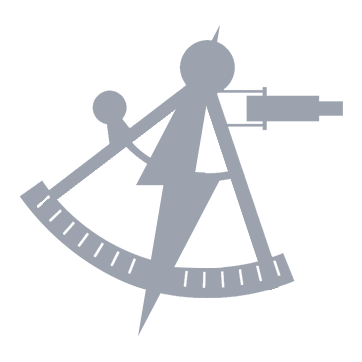Perched on a high bluff overlooking the vast ocean that swallowed almost all of Olympia II’s surface area, Admiral Elizabeth Hayden’s villa was several kilometers distant from the main settlement, Halcyon Bay. The low, rhythmic sound of the waves washing against the base of the cliff could be heard throughout the home, intermingling with the bright tones of “Fly Me to the Moon” by Sinatra coming through the hidden speakers in every room.
Serving as a flag officer was Hayden’s third career in Starfleet. Twenty-two years as a science officer preceded a further twenty-three more in the center seats of four different starships before earning flag rank at the beginning of the last decade. Going from science to command had come with a set of bad habits that she never quite broke: she was just as likely as any of Starfleet’s most notorious hotshots to want to join an away team herself, and she was known for double or triple-checking her science officers’ findings.
Moving into the literal highest echelons of Starfleet came with similar challenges. The basics of administering a sector and captaining a starship were the same, just with many, many more layers under her. It was difficult to order a starship to take on a difficult or dangerous mission without being on the bridge of that ship, just like it was difficult to send an away team down that she wanted to be part of herself.
There were new challenges, too, though. Namely, sitting through the endless barrage of meetings, committees, and councils that ended up on her calendar. She could do without the dress uniform, too. There was one thing that took absolutely no time to get used to: personal space.
As a botanist by training, Hayden had allowed herself the indulgence of a residence on the planet’s surface rather than on the station in orbit. On nice days, the three exterior walls of the large living space on the back of her villa opened up, their seemingly solid transparent aluminum panes rolling up into the ceiling to allow for cross-breezes. While she always imagined retiring back home to upstate New York, the views there were good enough to make her consider making it her permanent home.
Tugging at the rounded collar of her service dress uniform, Hayden made sure that her golden blonde hair was exactly the way she wanted it in a mirror by the foyer. She was also wearing a set of large silver-and-pearl earrings, which had been among her favorites since moving to an ocean world. They were just on the edge of being compliant with the regulations, but fashion indulgences also came with her rank. She smoothed her hair down, staring at herself. She didn’t feel like she’d been in Starfleet for over fifty years. She definitely didn’t feel like she was a few months away from hitting seventy. (She didn’t think that she looked like it either, but was less proud of herself for that thought.)
Still, she’d noticed herself wishing each morning that her commute could start just a little bit later—that she could be left to her privacy and her attempts at starting a garden. The idea of retirement left a sour taste in her mouth, but she was slowly coming around to the idea of finally telling the Federation that it had taken enough from her. Who would she be without her career, though?
“Admiral, shuttlecraft approaching,” the house computer informed her.
“Let’s get this show on the road then,” Hayden replied.
By the time Hayden crossed the living area to the back patio, she could hear the whine of the shuttle’s engine in the distance. Moments later, she could see its highly polished silver hull glinting in the sunlight as it began its final approach to the landing pad a few steps from the house. The type-7 shuttle landed with a soft clunk before the boarding door between the front windows swung open and the ramp dropped.
“Good morning, Admiral!”
Lieutenant Matthews’ voice was relentlessly positive. Her chief of security and personal aide, Hayden had come to rely on him over the past eighteen months, but there were days that she longed for the torrent of sarcasm that was always spewing from the mouth of his predecessor, Lieutenant Robinson. A little too tall for the shuttle, Hayden wondered how the young man didn’t hit his head on the hatch from how quickly he stepped off to greet her every morning.
“Good morning, Matthews,” Hayden replied, suppressing a chuckle as she approached him. “What’s up first on the docket?”
“This morning, you have an inspection of the Olympia III deuterium extraction facility. I thought it would be more efficient to proceed directly there rather than stopping at the station, ma’am,” Matthews replied.
“Officer thinking, Lieutenant,” Hayden said, though she wondered what had fallen through the cracks that she hadn’t found a way to delegate the thrilling task of inspecting a fuel depot to someone else. As she walked up the ramp, she saw another familiar face at the helm console to the side of the boarding area. “Scott Bowens. I thought I had you on the Bly,” she said.
“Uh, yes, ma’am. But the Bly’s in port, and I signed up for the shuttle rotation. I’ve got to say sharp, you know?” he replied.
Scott Bowens, the younger brother of Commander Harper Bowens, was every bit as awkward and unserious as his elder brother was confident and restrained. In many respects, Hayden found the younger one much more amusing.
“I do know, Lieutenant. That’s one of the reasons I take a shuttle every morning instead of just beaming to work: we need our pilots to stay sharp,” Hayden said, patting him on the shoulder as she boarded.
While an older model of shuttle, the type-7 was still one of the top choices for short-duration voyages for flag officers and other VIPs, because it offered a separate aft section that could be closed off from the cockpit. For Hayden, they were also a reminder of her time starting out in Starfleet in the late 2350s, though the cloth upholstery and pink-beige carpet had long been replaced with leather seating and sleek black flooring on her personal shuttle. Hers was the variant with longer windows that let the passengers in the aft compartment see out, a tiny hint of luxury not found on most newer craft.
As Hayden passed from the cockpit into her compartment, she noticed an unexpected guest. She frowned slightly at Dr. Alenis Anjar who was sitting on the bench to the side of the room. They’d known each other for a long time, so her displeasure was largely from her guess that she was overdue for some sort of examination and he was attempting to catch her to make sure it got done.
“Now this feels like some sort of ambush, Doctor.”
“Good morning to you, too, Admiral. Believe it or not, I’m here on official business,” Anjar replied, as Hayden took the principal passenger’s seat across from him. Coffee was waiting for on the desk, along with a copy of the day’s schedule. She took a sip and eyed the Bajoran captain, waiting for him to explain his presence. “Starfleet Medical has ordered health and safety checks of all particle fountains. There are questions about possible radiation exposure created by the subspace instability.”
“The so-called Blackout,” Hayden replied, with a nod. Her thoughts flashed to her deputy, Vice Admiral Stanton, who was also a physician. “I suppose Linda has better things to do than accompany me?”
Anjar scoffed. “I would wager heavily that all three of us have better things to do today,” the doctor grumbled.
“We’re ready to depart, Admiral,” Lieutenant Matthews reported from the cockpit, as the forward hatch sealed with a soft hiss.
“Very well,” Hayden confirmed.
Hayden swiveled her seat to face forward, as she found taking off in a sideways orientation to be disconcerting, even with the magic of inertial dampeners at work. The shuttle lifted off cleanly, and Lieutenant Bowens took them steadily up and out of the atmosphere in less than sixty seconds.
Above them, the massive blue hull of Olympia Station gleamed in the sun. Even for a veteran like Hayden and a cynic like Anjar, it was a stunning view. For the last several weeks, there had been something extra special about it: a pair of Tamarian deep space cruisers were orbiting the station as part of a cultural exchange program. Angular and almost crocodile-like in their appearance, they’d been a subject of fascination for the station’s whole population.
“Olympia Control, this is Admiral Hayden’s shuttle. Requesting clearance to proceed to Olympia III,” Bowens said.
“Confirmed. Your flight plan is approved. Safe travels.”
As soon as they cleared the atmosphere, the shuttle jumped to warp one. While warp flight within a system could be dangerous for larger vessels, shuttle travel at low warp was routine. At that speed, it took just under half an hour for the shuttle to zip across the gulf that separated the terrestrial world Olympia II from the large gas giant Olympia III—about four AUs—rather than the roughly five hours it would take at impulse. During the short journey, Hayden read and approved five after-action reports from ships in the field and was just signing off on a promotion by the time they dropped back to sublight speeds.
“Admiral, we’ll be on the station in approximately five minutes. They’re, uh, pretty strict about approach and departure speeds here,” Bowens reported, after securing their landing permission.
Ahead of the shuttle, the deuterium extraction facility was easily visible, the blue beam of its particle fountain shining against the muddy red atmosphere of the gas giant. Essentially an enormous tractor beam generator, the station pulled deuterium from the planet and compressed it into storage cannisters. Surrounding the refinery—itself a similar but much smaller mushroom shape to Olympia Station—were neat, orderly rows of deuterium tanks that were moored to vast gantry assemblies.
“I would hope so, Mr. Bowens, considering that there’s enough fuel out there to run every ship in this sector for a decade,” Hayden noted.
“Oh, yeah, totally, ma’am,” the lieutenant replied sheepishly.
Every few weeks, tankers arrived to collect refined deuterium to take it to the smaller stations and colonies in the sector, as well as inwards towards the core to support some other facilities, but the main purpose of the refinery was to create a stable stockpile of fuel for starships outbound on exploratory missions. Despite her irritation at having to perform the inspection, Hayden was very aware of what an important strategic asset they had there.
“Hey, I have a dumb question,” Bowens piped up, as they began their slow approach through the containers.
“I bet,” Anjar muttered, earning a disapproving glance from the admiral.
“Go on,” Hayden said.
“Well, the beam sucks hydrogen out of the planet, right? So, won’t there eventually be no more planet?”
“Sure, in about 250 trillion years, at the rates we need deuterium for fuel,” Hayden replied, chuckling. “Eyes on the road, lieutenant.”
“Yes, ma’am. Sorry, ma’am.”
“Remember when those were new?” Anjar asked, pointing out the window to a familiar silhouette in the distance.
The starship Thomas Paine stood guard, orbiting around the perimeter of the storage cannisters. Itself as much of an antique as the shuttle was, the New Orleans-class frigate was one of three older vessels that took turns patrolling the interior of the Olympia system. The refinery itself had no weapons, as the risk of an accidental explosion was too high to tolerate their presence.
“Barely,” Hayden admitted, studying the starship for a moment. She had always thought they’d looked like the juvenile or larval version of a Galaxy-class ship—like something that might one day grow up into one. “I’m surprised you do, though.”
“Oh, I don’t, Admiral,” the doctor replied, chuckling.
Hayden’s eyes flashed with annoyance, though the cheek the doctor was showing wasn’t quite obvious enough for the two junior officers to pick up on.
“That’s the ship that refuses to die—she’s got a few good decades left in her, I’d wager,” Hayden said, turning pointedly back to her PADD to avoid that conversation becoming one that was directly about her age.
Before that conversation could go any further, the shuttle shook as if it were hitting atmospheric turbulence.
“Woah. We’ve got some severe subspace chop,” Bowens muttered from the helm.
That was the only sign of warning they got before a massive aperture opened beyond the station. A number of the fuel pods were sucked in before alien vessels began pouring out. Hayden had never seen them in person before, but she knew from her briefing materials that Starfleet’s worst fears had now come to life: the Vaadwaur had made it to the Alpha Quadrant.
“Admiral, I’m reading at least a dozen vessels out there. Their weapons are hot,” Matthews reported from the cockpit. “The computer says that the energy signatures are Vaadwaur.”
Both of the lieutenants looked back to Hayden, eyes wide—what they were seeing shouldn’t be possible. More than that, they were in one of the most vulnerable places they could be, given that the shuttle was just as unarmed as the refinery was. As much as she wanted to take charge of the situation from the front, Hayden understood what it would mean if her shuttle were captured or destroyed in the midst of a Vaadwaur invasion.
“Signal the station to enact the failsafe and get us out of here, lieutenant,” Hayden ordered.
As Hayden deliberated, the Thomas Paine began to take fire from several Vaadwaur warships. It returned that fire with a spread of torpedoes and blasts of phaser fire, but the Vaadwuar had gotten a few shots in before the frigate’s shields could be raised. The station, meanwhile, sent out a signal to all of the remaining fuel pods, which fired their maneuvering thrusters in sequence to move away from the station at rapid speed. The last thing they wanted was to risk one of those pods full of hyper-compressed deuterium getting hit by weapons fire and causing an explosion.
“That refinery has a crew of sixty, Admiral. We can’t just leave them out here,” Anjar protested.
“I have no intention of leaving anyone, but there’s nothing we can do in a shuttle, Doctor,” Hayden replied. “Bowens, best speed back to Olympia.”
“I’ll do my best, ma’am,” Bowens replied, as the Thomas Paine took another hit, her shields crackling from the impact.
Hayden’s shuttle arced away from the station, its impulse engine kicking into full power to angle back towards Olympia Station. Within a few more seconds, there were tiny flashes at the edge of the battle as several of the station’s runabouts and fighters joined the scene. The admiral could only hope for the best for them, as the shuttle jumped back to warp.
Pushing the engines to their limit, Bowens had the shuttle to Olympia Station in less than thirty seconds. The blue hull of the station loomed large as they came in for the quickest non-emergency landing that Hayden had ever seen. Once on the station, Matthews rushed her to the station’s main operations facility. The massive viewport had been sealed off with a sheet of solid duranium as the station readied its defenses.
“We’re launching everything we’ve got,” Rear Admiral Brett Logan said, as Hayden approached. The rear admiral was the station’s permanent commander and handled day-to-day operations, while Hayden commanded the sector itself. “I was just about to send out a distress call.”
“Do it. We’re not going to get out of this without some creative thinking,” Hayden confirmed.
By the time Arcturus arrived in the Olympia system nearly eight hours after the attack began, the system’s defenses were under heavy strain. The light cruiser Nellie Bly had been hurried out of spacedock to join the Thomas Paine, and, along with the pair of Tamarian warships, they’d been able to keep the Vaadwaur forces at the deuterium refinery occupied long enough for the refinery crew to evacuate. They’d been forced back to the station itself after a few hours, though.
The Vaadwaur had been worn down in that time too, though. They may have eventually been able to crack the station’s shields, but they weren’t prepared for a full-scale retaliation from Arcturus Squadron. The renewed force from Arcturus, Hipparchus, and a handful of the other vessels that had managed to reach them in time swept the Vaadwaur force back to the underspace aperture, suffering severe casualties as they retreated.
Hayden and the station remained on edge and on alert for days. Gradually, the entire squadron took up a defensive position around the station, but they had heard absolutely nothing from Starfleet Command. A week went by, then two. By all accounts, the Vaadwaur incursion to Olympia had been just a probing exercise. Even still, with subspace now cut off, they were alone and in the dark.

 Bravo Fleet
Bravo Fleet








